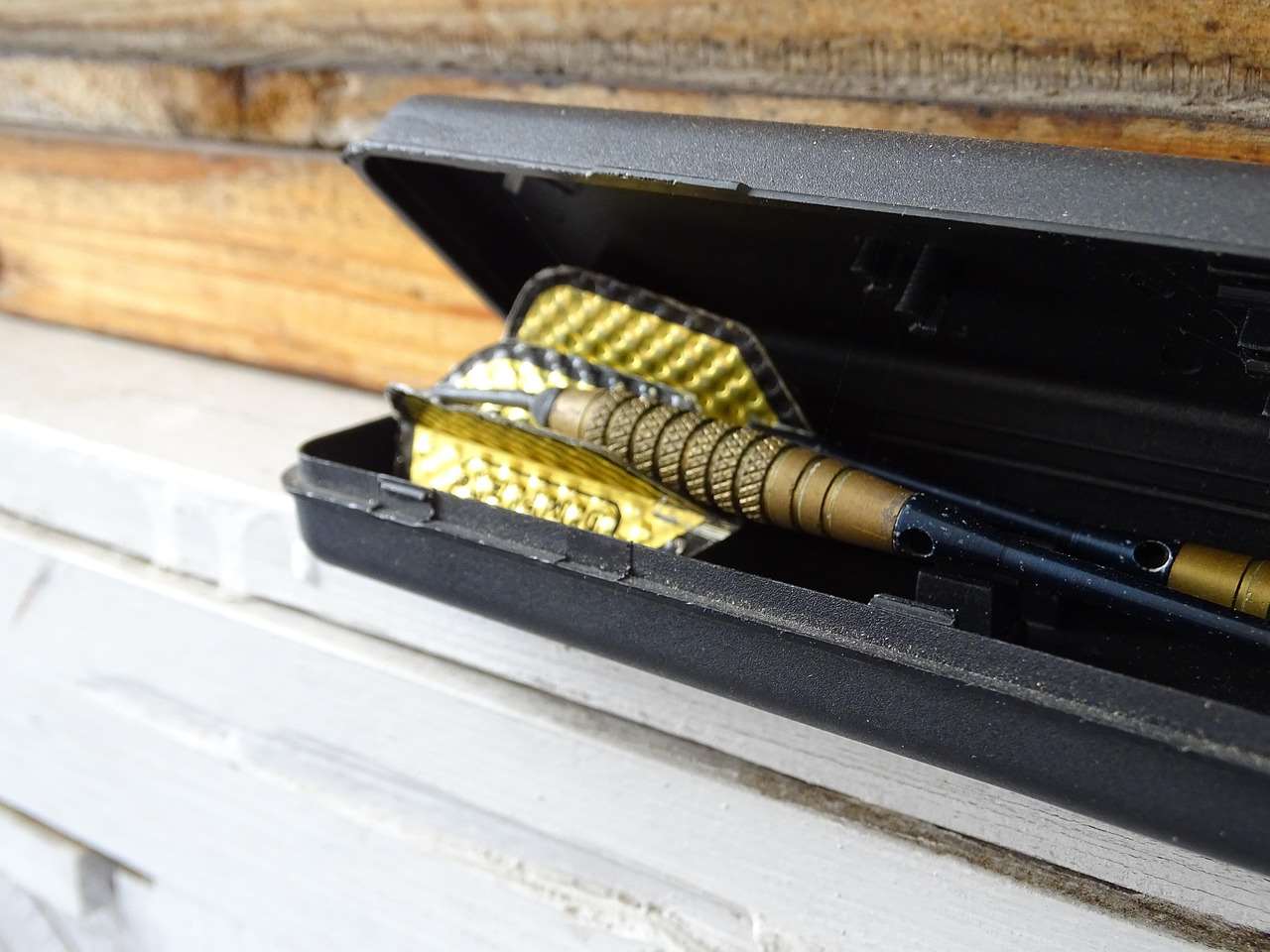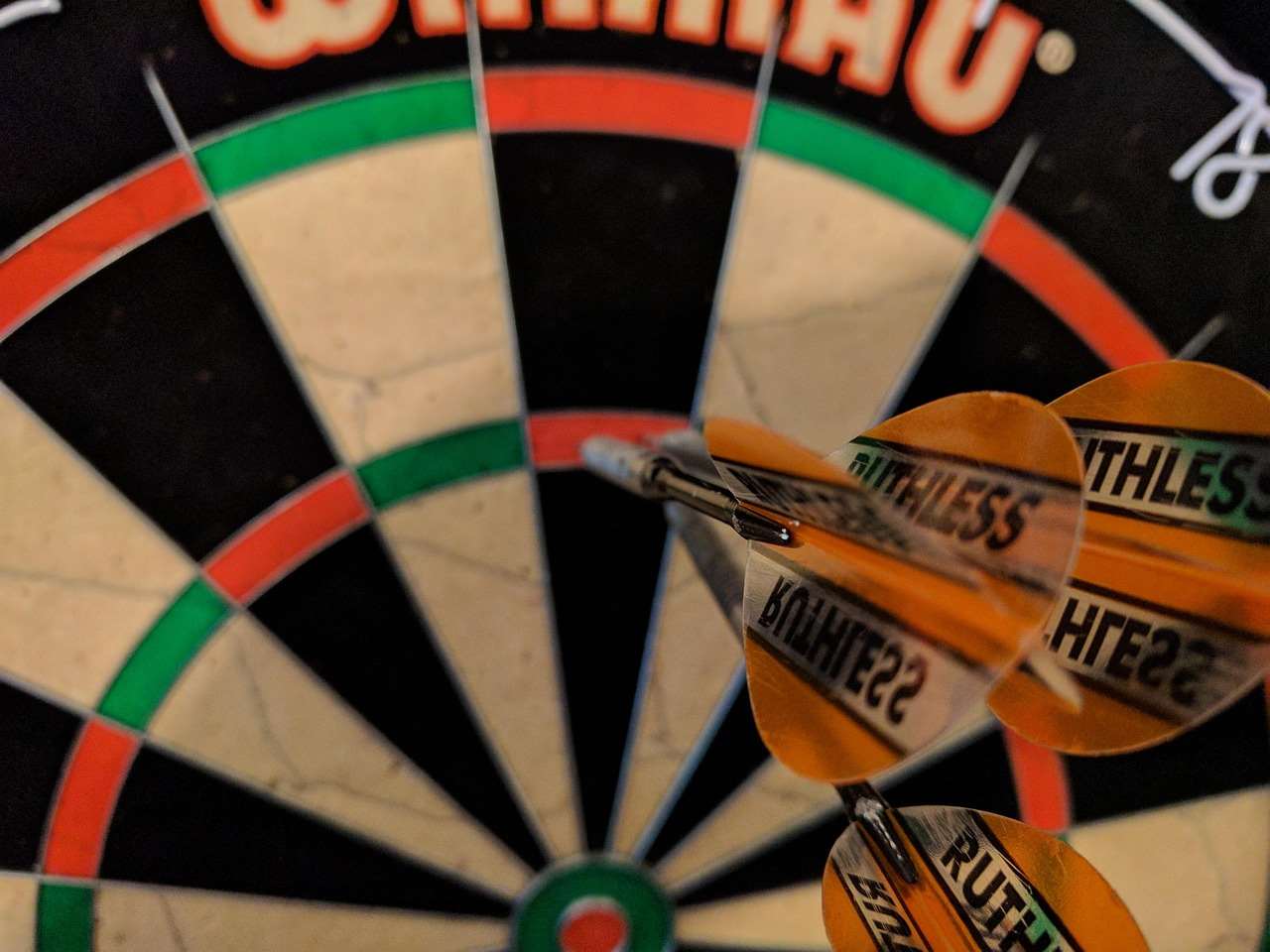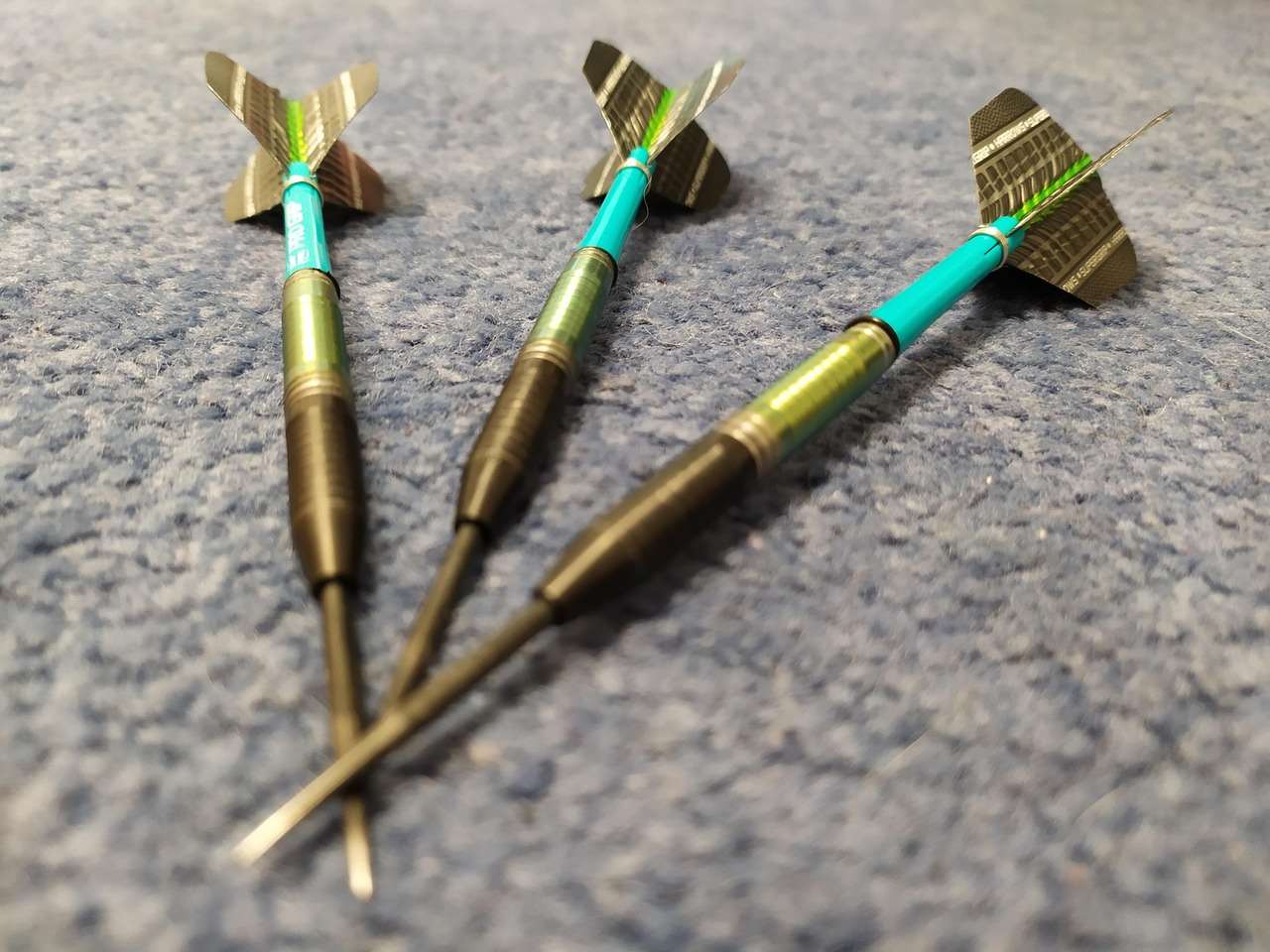Mastering the art of darts is within reach with the right techniques; this guide demystifies the process, transforming your **throwing dart challenge** from frustrating to fulfilling. We’ll cover everything from stance and grip to release and follow-through, providing you with the knowledge to improve your accuracy and consistency.
⚠️ Still Using Pen & Paper (or a Chalkboard)?! ⚠️
Step into the future! The Dart Counter App handles all the scoring, suggests checkouts, and tracks your stats automatically. It's easier than you think!
Try the Smart Dart Counter App FREE!Ready for an upgrade? Click above!
The Fundamentals of the Throwing Dart Challenge
Embarking on a **throwing dart challenge** requires a solid understanding of the core elements that contribute to a successful throw. These elements include your stance, grip, the throw itself, and the follow-through. Each aspect plays a crucial role in achieving accuracy and consistency on the dartboard.

Stance: Building a Solid Foundation
Your stance is the foundation upon which your entire throw is built. A stable and balanced stance allows for consistent and repeatable movements. There are three primary stances commonly used by dart players:
- Forward Stance: Involves standing directly in front of the oche (the throwing line) with your dominant foot slightly ahead.
- Angled Stance: Positioning yourself at a slight angle to the oche with your dominant foot forward and angled towards the board. This stance allows for better sightlines and can reduce strain on your back.
- Side Stance: Standing perpendicular to the oche with your dominant side facing the board.
Experiment with each stance to determine which feels most natural and comfortable for you. Ensure your weight is evenly distributed and your body is relaxed. Finding the perfect stance will help you with any **dart throwing challenge** you encounter.
Grip: Finding What Works Best for You
The grip is another critical aspect of dart throwing. It affects the control and release of the dart. There is no single “correct” grip; it’s highly personal and depends on the individual’s hand size, finger length, and throwing style. However, here are some common grips:
- Two-Finger Grip: Holding the dart between your thumb and index finger, with your middle finger providing support.
- Three-Finger Grip: Using your thumb, index finger, and middle finger to grip the dart, offering more control.
- Four-Finger Grip: Involving your thumb and all three remaining fingers for maximum control.
The key is to hold the dart firmly enough to maintain control but not so tightly that it restricts your movement. Avoid gripping the dart too far forward or too far back. Find the balance that allows you to release the dart smoothly and consistently. Remember, practice is key to perfecting your grip and overcoming any **throwing dart challenge**.
Mastering the Throwing Motion
The Takeback: Preparing for Release
The takeback is the initial movement of your arm before the forward motion of the throw. Keep your elbow elevated and your forearm parallel to the ground. The takeback should be smooth and controlled, avoiding any jerky movements. A consistent takeback promotes a consistent throw and contributes to your ability to complete any **throwing dart challenge**.

The Forward Throw: Releasing the Dart
The forward throw is the most crucial part of the motion. As you bring your arm forward, focus on keeping your elbow as still as possible. The movement should originate from your shoulder and elbow, not your wrist. As you approach the release point, concentrate on a smooth and consistent acceleration. The release point should be just before your arm is fully extended. Experiment with different release points to find the one that gives you the best accuracy. Think about the Dart Counter App and how it would track your progress.
Follow-Through: Ensuring Accuracy
The follow-through is just as important as the release. It helps to maintain the trajectory of the dart and ensures a consistent motion. After releasing the dart, continue your arm motion smoothly and fully extend your arm towards the target. Maintain your focus on the target even after the dart has left your hand. A strong follow-through is a key ingredient for conquering any **throwing dart challenge**.
Advanced Techniques for the Throwing Dart Challenge
Finding Your Rhythm: The Power of Consistency
Consistency is paramount in darts. Once you’ve established a solid stance, grip, and throwing motion, the next step is to develop a consistent rhythm. This involves repeating the same motion and timing with each throw. This is what separates casual players from those who seriously approach any **throwing dart challenge**. Practice regularly to reinforce your muscle memory and fine-tune your rhythm. Experiment with different tempos to find the one that feels most comfortable and natural.
Mental Game: Staying Focused Under Pressure
Darts is not just a physical game; it’s also a mental one. Staying focused and maintaining composure under pressure are essential skills for success. Develop strategies to manage your nerves and avoid distractions. Visualize your success before each throw and maintain a positive attitude even when you’re facing a tough situation. Consider the pressure during the darts champion league, or the how did the darts finish last night results.

Equipment Matters: Choosing the Right Darts
The type of darts you use can significantly impact your performance. Experiment with different weights, shapes, and materials to find the darts that suit your throwing style. Consider the following factors when choosing darts:
- Weight: Heavier darts tend to be more stable in flight, while lighter darts require more control.
- Shape: Different barrel shapes can affect your grip and release.
- Material: Tungsten darts are more durable and allow for a slimmer profile, while brass darts are more affordable.
Remember to also look for a darts oche mat winmau. The right setup is important!
Troubleshooting Common Issues in the Throwing Dart Challenge
Dart Wobble: Identifying the Causes
Dart wobble can be frustrating and can negatively affect your accuracy. Common causes of dart wobble include:
- Incorrect Grip: Gripping the dart too tightly or loosely can cause it to wobble.
- Inconsistent Release: Releasing the dart at different points in your throw can lead to wobble.
- Poor Follow-Through: A weak follow-through can disrupt the dart’s trajectory.
To address dart wobble, focus on refining your grip, release, and follow-through. Ensure your movements are smooth and consistent. Consider using a essential darts scoreboard, too.
Grouping Issues: Tightening Your Shots
Grouping refers to the clustering of your darts on the board. If your darts are scattered all over the board, it indicates inconsistency in your throw. To improve your grouping, focus on:
- Stance Stability: Ensure your stance is solid and balanced.
- Consistent Release Point: Practice releasing the dart at the same point in your throw each time.
- Target Focus: Maintain your focus on the target throughout your throw.

Bounce-Outs: Minimizing Rejection
Bounce-outs occur when your dart hits the board but doesn’t stick. This can be caused by:
- Dull Dart Points: Sharp dart points are essential for sticking into the board. Regularly sharpen your dart points to prevent bounce-outs.
- Worn-Out Dartboard: A worn-out dartboard can have loose fibers, making it difficult for the darts to stick. Consider replacing your dartboard if it’s showing signs of wear.
- Throwing Technique: A soft or inaccurate throw can also cause bounce-outs.
Addressing bounce-outs involves maintaining your equipment and refining your throwing technique. You may also want to purchase some sharp shooter darts.
Practice Drills to Conquer the Throwing Dart Challenge
Around the Clock: Precision Training
This drill focuses on hitting each number on the dartboard in sequence, starting with 1 and working your way up to 20. This is one of the best ways to take on the **throwing dart challenge**. This drill improves your accuracy and consistency across the entire board.
Double Trouble: Mastering the Doubles
Doubles are crucial for finishing legs in darts. This drill involves practicing hitting each double on the dartboard. Start with Double 1 and work your way up to Double 20. This drill will help you develop your precision when aiming for doubles.
Treble Twenty Focus: Scoring Powerhouse
The treble twenty is the highest-scoring segment on the dartboard. This drill involves focusing solely on hitting the treble twenty. This drill will improve your accuracy and help you maximize your scoring potential. You might feel some darts leg pain after all of this practice!

Conclusion: Embracing the Throwing Dart Challenge
The **throwing dart challenge** is a journey of continuous improvement. By understanding the fundamentals, mastering your throwing motion, and addressing common issues, you can significantly enhance your dart-playing skills. Remember to practice regularly, stay focused, and embrace the challenge. With dedication and perseverance, you can transform yourself from a novice to a skilled dart player. So, pick up your darts, step up to the oche, and start your journey to darting excellence today! Consider purchasing a dartboard with automatic scoring to make tracking your progress much easier.
Hi, I’m Dieter, and I created Dartcounter (Dartcounterapp.com). My motivation wasn’t being a darts expert – quite the opposite! When I first started playing, I loved the game but found keeping accurate scores and tracking stats difficult and distracting.
I figured I couldn’t be the only one struggling with this. So, I decided to build a solution: an easy-to-use application that everyone, no matter their experience level, could use to manage scoring effortlessly.
My goal for Dartcounter was simple: let the app handle the numbers – the scoring, the averages, the stats, even checkout suggestions – so players could focus purely on their throw and enjoying the game. It began as a way to solve my own beginner’s problem, and I’m thrilled it has grown into a helpful tool for the wider darts community.